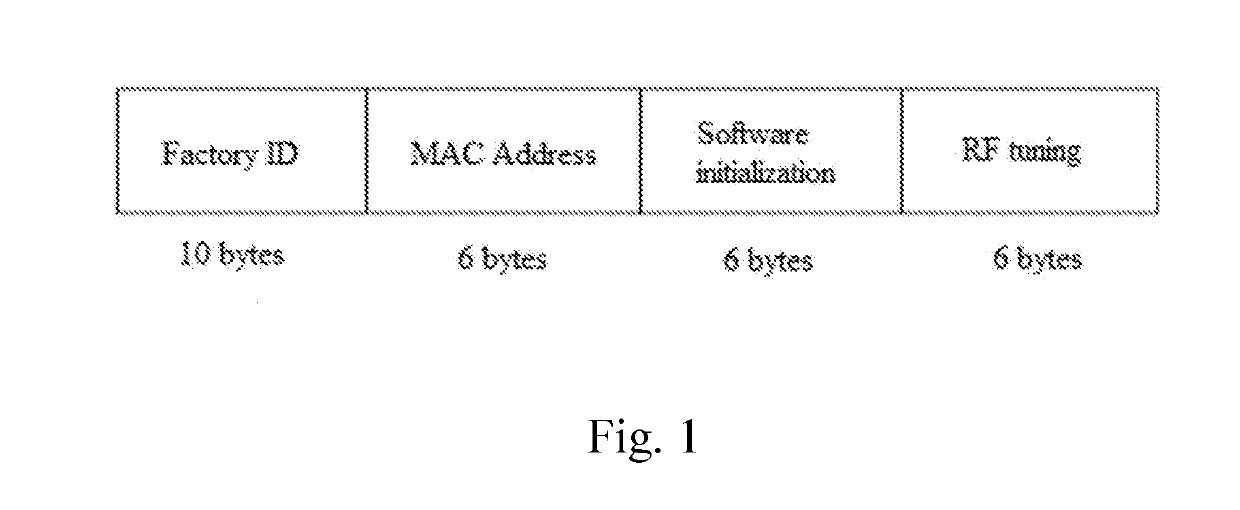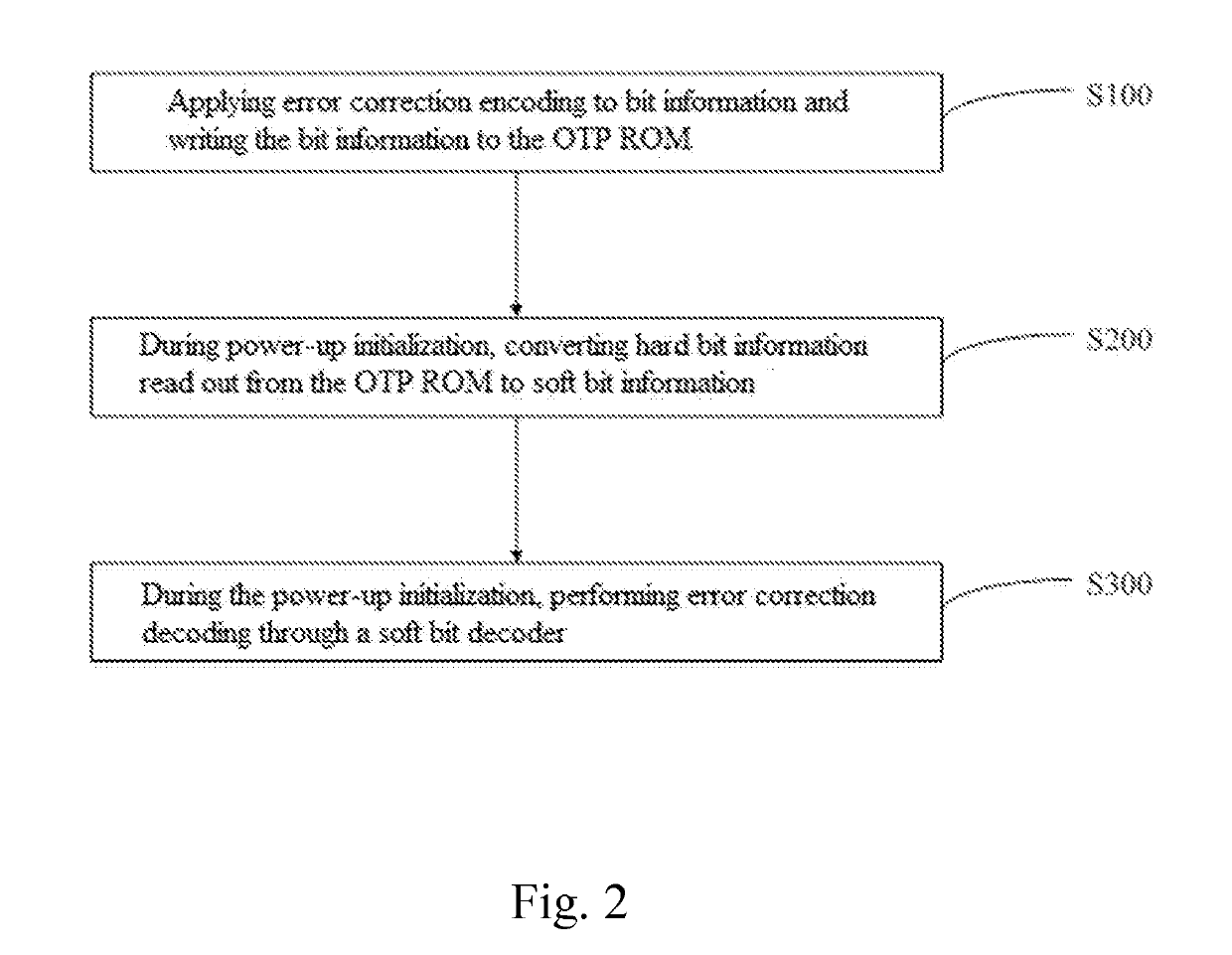Unidirectional Bit Error Correcting Method for OTP ROM
a technology of error correction and otp rom, which is applied in the field of communication chips, can solve the problems of 0-to-1 unidirectional bit error, difficult to find unidirectional bit errors with otp roms, and otp rom may experience erroneous fusing, etc., and achieves the effects of prolonging chip service life, improving chip stability, and strong error correction capability
- Summary
- Abstract
- Description
- Claims
- Application Information
AI Technical Summary
Benefits of technology
Problems solved by technology
Method used
Image
Examples
first embodiment
[0039] a scenario where encoding protection is applied to all the 28 bytes information.
[0040]A ½ convolutional code encoder is selected, which requires additional 6 inserted bits, and then the total amount of the encoded data becomes: (28*8+6)*2=460 bits, which will occupy a space of 58 bytes. Subsequently, the encoded data is written into the OTP ROM of the chip by a writer.
[0041]During power-up initialization of the chip, the hard bit information of 58 bytes is read out from the OTP ROM. The soft bit generation method includes: 0→−7, and 1→1. The generated soft bit stream is inputted into the Viterbi decoder for decoding, and then the starting 28 bytes of the output stream of the decoder are taken, i.e., to obtain the original information data with error corrected.
second embodiment
[0042] a scenario where a tail portion of the OTP ROM is prone to static electricity burn through.
[0043]In the present embodiment, a tail portion of the OTP ROM in the chip is prone to static electricity burn through. During writing, if the last 2 bytes of 6 bytes for the power-up software initialization information, and 6 bytes for RF tuning information were written to that tail portion prone to fusing, then the inflicted 8 bytes may require encoding protection to be applied. The ½ convolutional code encoder is selected, with additional 6 inserted bits, and then the total amount of the encoded data becomes: 20*8+(8*8+6)*2=300 bits, which will occupy a space of 38 bytes, then the encoded data are written into the OTP ROM of the chip by a writer.
[0044]During power-up initialization of the chip, the hard bit information of 38 bytes is read out from the OTP ROM, and the last 18 bytes thereof are converted to soft bits according to the soft bit generation approach described in the first...
third embodiment
[0045] a scenario where encoding protection is applied to critical information.
[0046]Software initialization information and RF tuning information in the information to be written belong to critical information; if error occurs with the two portions of information, the operating performance of the chip may be seriously reduced, even unable to operate normally. Thus, as considered for certain applications, encoding protection may be prioritized to be applied to the two portions.
[0047]A ½ convolutional code encoder is selected, with additional 6 inserted bits, then the total amount of the encoded data becomes: 16*8+(12*8+6)*2=332 bits, which will occupy a space of 42 bytes. Then the encoded data are written into the OTP ROM of the chip by a writer.
[0048]During power-up initialization, the hard bit information of 42 bytes is read out from the OTP ROM, and the last 26 bytes thereof are converted to soft bits according to soft bit generation approach described in the first embodiment. Th...
PUM
 Login to View More
Login to View More Abstract
Description
Claims
Application Information
 Login to View More
Login to View More - R&D
- Intellectual Property
- Life Sciences
- Materials
- Tech Scout
- Unparalleled Data Quality
- Higher Quality Content
- 60% Fewer Hallucinations
Browse by: Latest US Patents, China's latest patents, Technical Efficacy Thesaurus, Application Domain, Technology Topic, Popular Technical Reports.
© 2025 PatSnap. All rights reserved.Legal|Privacy policy|Modern Slavery Act Transparency Statement|Sitemap|About US| Contact US: help@patsnap.com


